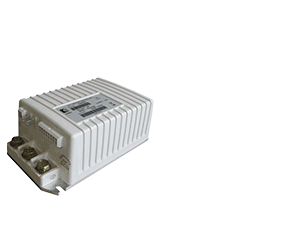How you charge and discharge your batteries can affect their overall cycle life.
When you invest in a new set of batteries for your golf car, you can’t help wonder how you can make them last longer than the previous set. In actuality, you can predict the actual cycle life of your batteries by understanding what battery cycle life is, and how charging can affect it.
Most golf car owners know that when a battery is discharged and then recharged, that is considered one cycle. The number of cycles, or times the battery can be discharged and recharged, is called its cycle life. Therefore the expected use the golf car gets and the number of times it will be charged and discharged will ultimately predict how long the batteries will last.
So why is it that some batteries have a longer cycle life than others? The expected cycle life of deep cycle batteries is determined by several factors such as battery design and electrochemistry, the quality of materials, and overall construction. In addition, variables in the application such as charging methods, frequency of maintenance (watering interval, terminal cleaning and tightening, etc.), and environmental conditions have a significant effect on overall cycle life.
The single biggest factor affecting actual cycle life, however, is depth of discharge (dod). The percent dod is measured by dividing the number of amp-hours discharged from the battery on average by the rated capacity of the battery (usually the 20 hour capacity) as a percentage. Most deep cycle battery manufacturers offer an expected cycle life vs depth of discharge chart that shows the expected cycle life of batteries when discharged repeatedly to various depths of discharge. It is important to understand that the cycle life scale on these charts is usually plotted on a logarithmic scale. This is because a small change in the percent dod will make a large change in the battery’s overall cycle life.
For example, if the cycle life of a battery is 500 cycles at 100-percent dod, one would expect the cycle life at 50-percent dod to double to 1000 cycles. In reality, it increases by 2.3 times to 1150 cycles. Charging the batteries at every opportunity not only minimizes the percent dod and maximizes cycle life, but also maximizes the battery’s state of charge for optimum runtime, every time the vehicle is used.
Most modern chargers utilize automatic charge controls that prevent excessive overcharge when recharging batteries after a shallow discharge. The expected cycle life vs depth of discharge chart can be used to compare the expected cycle life of batteries from various manufacturers in different applications. Most battery manufacturers recommend sizing the batteries for an application at ~50% dod. This optimizes the initial purchase cost of the batteries vs the expected cycle life of the batteries at the designed dod. This is often referred to as the cycle life cost of the batteries, and can be measured as the total cost per amp-hour of throughput during the life of the batteries.
An example of this principle is in the design of golf cars. Golf car designers have a wide range of choices in battery voltages and amp-hour capacities but they must also take into account the size and weight of the battery pack and the overall cost of the vehicle system. Golf car battery pack voltages have increased in voltage from 24 volts to 36 volts to 48 volts and higher to increase power for acceleration and hill climbing. At the same time, battery pack amp-hour capacity has decreased from over 200 ah for 6 volt batteries to 175 ah or less for 8 volt batteries to 150 ah or less for 12 volt batteries as system efficiencies have increased and regenerative braking has increased. The total watt-hour energy content of the system has decreased from over 10,000 watt-hours for a 48v system with 6v batteries to 8,000 watt-hours for a 48v system with 8v batteries to 7,000 watt-hours for a 48v system with 12v batteries while still maintaining the capability to golf 36 holes without a recharge. Even with regenerative braking, however, the average %dod has increased, resulting in a decrease in expected cycle life. Improvements in battery design have offset this effect to some degree.
Using an automatic charger with the proper charge profile and/or selectable charge algorithm for the batteries being used is critical to achieving the expected battery life in the application. It is important to check that the charger is the right one for the type of battery (flooded deep cycle, sealed agm or gel), amp-hour capacity of the battery and manufacturer of the battery.
Check with the manufacturer of the battery to determine the proper charger and charge algorithm. This is particularly important when purchasing new batteries for an existing application. Using the wrong charger or charge algorithm can significantly shorten the life of your batteries. The charge algorithm should include the capability for either automatic or manual equalization charging. This is important for balancing the state of charge of cells in a pack and to provide enough gassing to mix the electrolyte to prevent stratification. Equalization charging should be performed at least once a month.
Similarly, not performing the proper type and frequency of maintenance can reduce the life expectancy of your batteries. This includes watering the batteries regularly with distilled or properly purified water, cleaning and tightening terminals and hardware regularly, and observing environmental conditions that could affect battery life. Temperature is particularly important since operation at extremely high or low temperatures directly affects battery performance and life. Storage temperature is important since it affects self-discharge rate. Maintaining a healthy state of charge during storage is important to prevent sulfation and potential freezing at low state of charge.
More information on battery maintenance, cycle life and understanding dod can be found on the u.s. Battery manufacturing website at www.usbattery.com.




















